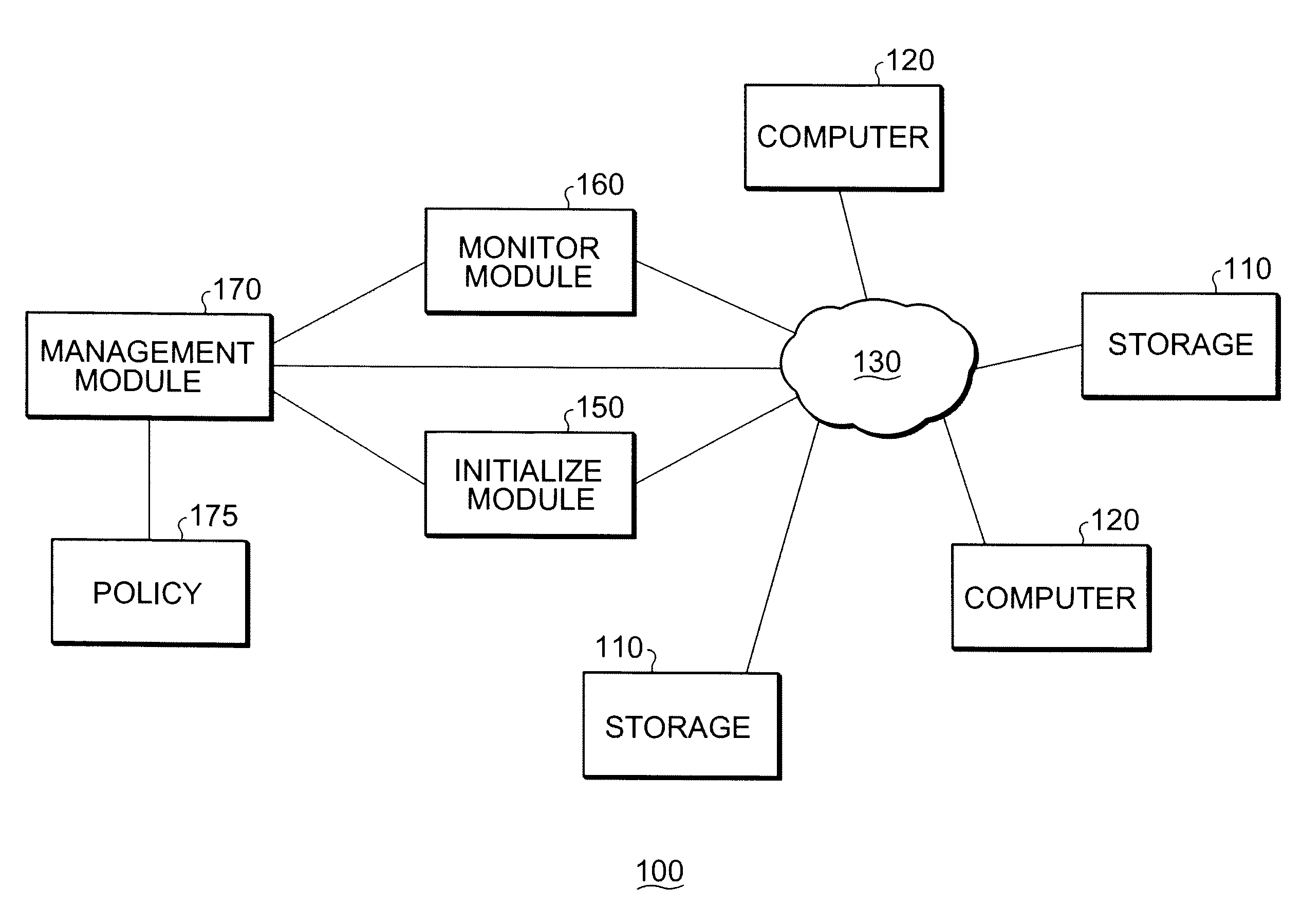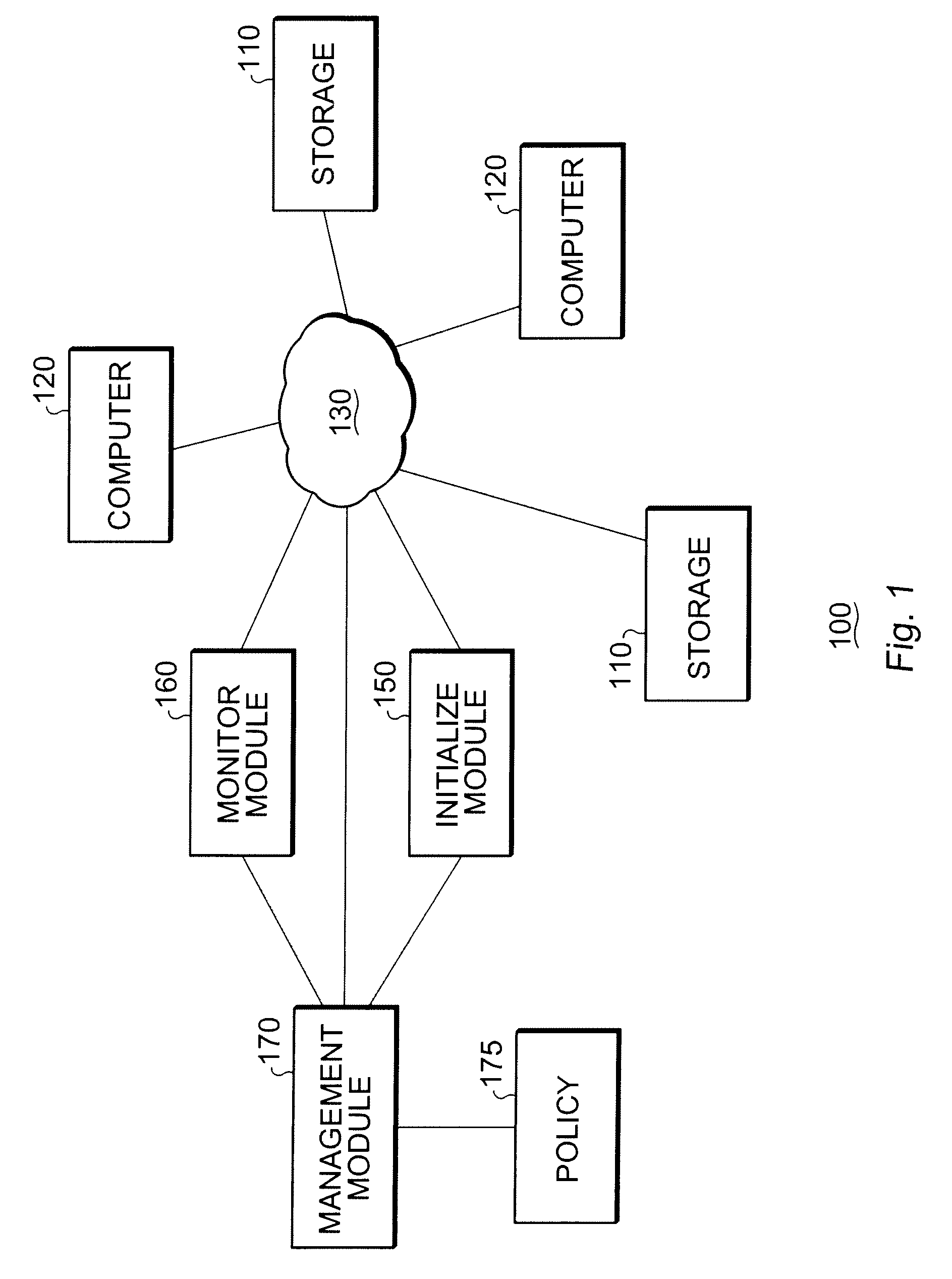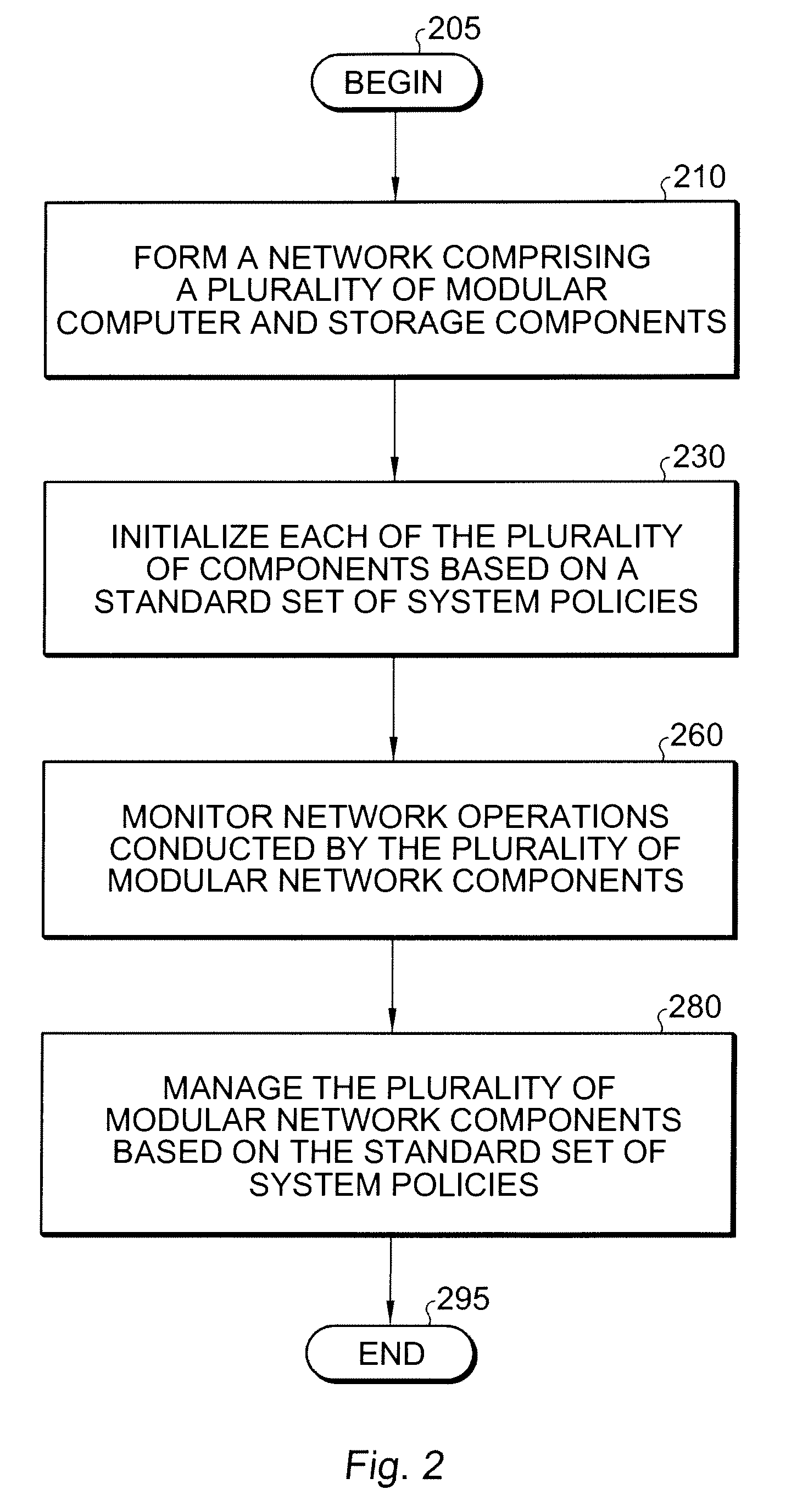Modular integrated computing and storage
- Summary
- Abstract
- Description
- Claims
- Application Information
AI Technical Summary
Benefits of technology
Problems solved by technology
Method used
Image
Examples
Embodiment Construction
[0016]A modular computing system comprising a plurality of modular components coupled together via an interface common throughout the network is herein disclosed by way of example. According to one embodiment of the present invention, a plurality of modular components is coupled together to form a computing system. Included in the system is a plurality of modules configured to monitor, initialize, and manage the system's modular components.
[0017]Specific embodiments of the present invention are hereafter described in detail with reference to the accompanying Figures. Like elements in the various Figures are identified by like reference numerals for consistency. Although the invention has been described and illustrated with a certain degree of particularity, it is understood that the present disclosure has been made only by way of example and that numerous changes in the combination and arrangement of parts can be resorted to by those skilled in the art without departing from the spi...
PUM
 Login to View More
Login to View More Abstract
Description
Claims
Application Information
 Login to View More
Login to View More - R&D
- Intellectual Property
- Life Sciences
- Materials
- Tech Scout
- Unparalleled Data Quality
- Higher Quality Content
- 60% Fewer Hallucinations
Browse by: Latest US Patents, China's latest patents, Technical Efficacy Thesaurus, Application Domain, Technology Topic, Popular Technical Reports.
© 2025 PatSnap. All rights reserved.Legal|Privacy policy|Modern Slavery Act Transparency Statement|Sitemap|About US| Contact US: help@patsnap.com



